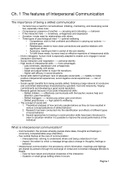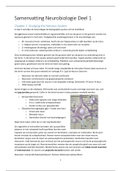Samenvatting
Volledige samenvatting Skilled Interpersonal Communication met afbeeldingen
- Instelling
- Vrije Universiteit Amsterdam (VU)
Dit document is een volledige samenvatting van het studieboek Skilled Interpersonal Communication geschreven door Hargie, editie 6. Het document bevat afbeeldingen uit het boek en is gestructureerd volgens dezelfde kopjes. Alle begrippen worden duidelijk uitgelegd.
[Meer zien]






